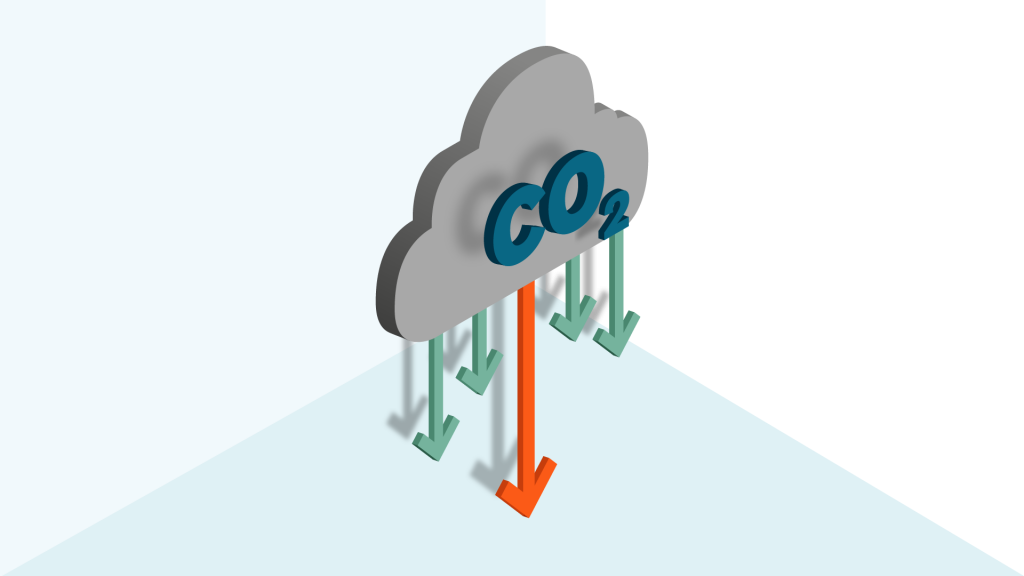Planned changes to end-of-waste status for plastics and textiles
Published on 29th June 2022
A number of legislative works are underway in the EU related to the implementation of tools for the Circular Economy Action Plan. These works are necessary to achieve the stringent environmental goals set out in the Paris Agreement or in the Fit for 55 package.
The EC is compiling regulations that are fundamental from the perspective of circular economy. The idea is to boost the recycling of waste to the economy, e.g. by subjecting them to general recovery or recycling processes.
Currently, end-of-waste status – under the Waste Directive and the Polish Act on Waste – raises numerous questions and doubts. Defining end-of-waste criteria is to facilitate and accelerate these processes.
The EU plans to adopt regulations on detailed criteria for end-of-waste status for other selected types of waste: first plastic waste and then textile waste.

End-of-waste – the criteria
As a rule, products or their packaging whose owners want to discard (or are required to do so) lose their product character and become waste.
Once treated – e.g. recycled, including a change in physical and chemical properties – waste may become products again.
Pursuant to the regulations in place, end-of-waste status requires that a given waste – after it undergoes a recovery process, including recycling – have properties that are characteristic of products offered on the market (1).
Pursuant to Polish regulations, the end-of-waste criteria cover:
- the conditions set out in the Act on waste, including using it for specific purposes, the existence of a market for given items or substances or the fulfillment of technical requirements specified in the regulations – where all the conditions specified in the regulations must be met jointly; and
- detailed conditions for end-of-waste status which are specified in the provisions of European Union law or national regulations, or in the permit for waste processing.
Currently, EU legislation provides specific end-of-waste conditions only for certain types of scrap (2) and cullet (3). The Polish legislator regulated the end-of-waste conditions only for reclaimed asphalt grindings (4), but legislative work is currently underway and detailed conditions for end-of-waste status for waste generated in the process of energy combustion of fuels are defined (5).
End-of-waste – the meaning
End-of-waste is of major business importance. A product classified as waste falls into a waste-dedicated regime. It introduces special requirements for waste management: limiting the options for use or introducing special requirements for storage or transport. End-of-waste items become products or substances that are not subject to this regime and may be subject to free circulation and transfer (given they are not subject to specific provisions for given products or substances). In addition, products can be sold for a higher price than waste.
Businesses are therefore pressing for clear regulations that define when the above-described regime may be discontinued. This will support free circulation of end-of-waste products or raw materials (given they are not subject to specific provisions for given product). It will also facilitate the further use of the end-of-waste items and will streamline their storage and transport.
A major problem is the lack of harmonized rules to confirm the end-of-waste status. Regulations governing it differ from one EU Member State to another – in some of them, end-of-waste requires a decision by an appropriate authority, while in others the waste is reclassified to a non-waste product or raw material in a decision by the holder of the waste. In the absence of uniform end-of-waste regulations, business operating in several EU Member States face significant difficulties - there is a risk that waste that has ceased to be waste in one country (and is treated as a full-value product or raw material) will still be treated as waste in another jurisdiction. This can trigger problems for the cross-border shipment of waste.
Lack of harmonization has been identified as one of the four key legal issues at the interface of regulations on substances, products and waste which hinder the implementation of circular economy (6). In response to these concerns, the EU announced measures to further regulate end-of-waste status for specific waste groups.
What is the EU’s proposal?
Priorities for establishing the detailed end-of-waste conditions have been defined on the basis of a report requested by the Commission (7). The assessment made in the report as for which waste should be defined with detailed end-of-waste conditions was first based on 12 criteria, including the views of stakeholders, the current level of collection and recycling of a given waste stream, the possibility of recovering raw materials, the impact on the environment and human health.
The conclusions of the report stated that end-of-waste criteria should be first defined for plastic waste covering:
- polyethylene terephthalate recovered/recycled from plastic waste;
- low- and high-density polyethylene recovered/recycled from plastic waste;
- mixed plastics waste recovered/recycled from plastic waste;
- polystyrene and expanded polystyrene recovered/recycled from plastic waste; and
- polypropylene plastic recovered/recycled from plastic waste.
The next on the list is textile waste covering:
- separately collected clothes and other textiles prepared for re-use;
- cellulosic fibres recovered/recycled from textile waste; and
- mixed fibres recovered/recycled from textile waste.
In line with the report-defined guidelines and after consulting with stakeholders, the Commission announced that works on defining the end-of-waste criteria for plastic waste will start in 2022 while those for textiles will start in 2023.
How to evaluate the EU’s regulatory plans?
The EU’s steps to define the detailed end-of-waste conditions for subsequent groups of waste should be seen positively - both for plastic and textile waste. Any step that may promote recovery (recycling) and thus facilitate the reuse of plastic and textile waste is part of the circular economy implementation plan and is consistent with other EU regulatory efforts.
Plastic waste accounts for a large proportion of waste and fighting it is one of the EU’s objectives - already reflected in EU legislation. Seas and oceans littered with plastic waste triggered the adoption of the Singe-Use Plastics Directive (8). Its implementation into Polish law is currently intensely debated. At the same time, plastic waste has a great potential for recycling and reuse. The market needs raw material available from recycled plastic waste.
The EU also sees the problem with textile waste. Around the world, a truckload of textiles is landfilled or incinerated every single second (9). The action plan that the EU intends to take in response to this problem was revealed in March 2022 as the EU Strategy for Sustainable and Circular Textiles (10). These plans assume introducing a system of extended liability of textile producers, taking into account eco-modulation mechanisms (expected upon the next review of the Waste Framework Directive in 2023).
Setting end-of-waste conditions for plastic and textile waste that is clear and understandable for implementation for all EU Member States can contribute to reducing the amount of plastic and textile waste that will be incinerated or landfilled. This may promote recovery (recycling) and re-use.
Effectively recycling plastic and textile waste into the economy will certainly facilitate their reuse. End-of-waste items will in principle become the subject of free circulation and may be used outside of the waste regime – like a product. In addition, businesses will not face costs to comply with specific requirements regarding waste storage or transport once waste becomes a product.
With end-of-waste rules introduced at the EU level (we assume that the proposed solutions will be introduced as a regulation directly applicable in all member states), the legal framework may be standardized for end-of-waste status. This would eliminate problems related to different interpretations by the authorities of individual member states. This will be embraced by businesses operating in several jurisdictions.
Stay updated with our future publications on the matter.
(2) Council Regulation (EU) No 333/2011 of 31 March 2011 establishing criteria determining when certain types of scrap metal cease to be waste under Directive 2008/98/EC of the European Parliament and of the Council; Commission Regulation (EU) No 715/2013 of 25 July 2013 establishing criteria determining when copper scrap ceases to be waste under Directive 2008/98/EC of the European Parliament and of the Council
(3) Commission Regulation (EU) No 1179/2012 of 10 December 2012 establishing criteria determining when glass cullet ceases to be waste under Directive 2008/98/EC of the European Parliament and of the Council
(4) Regulation of the Minister of Climate and Environment of 23 December 2021 on the determination of detailed conditions for ending the status of waste for asphalt grindings (Journal of Laws of 2021, Item 2468)
(5) Draft no. 655, available at: https://legislacja.rcl.gov.pl/projekt/12356300
(6) Communication from the Commission to the European Parliament, the Council, the European Economic and Social Committee and the Committee of the Regions on the implementation of the circular economy package: options for approaches to the interaction between chemicals, products and waste legislation, Strasbourg, 16 January 2018.
(7) "Scoping possible further EU-wide end-of-waste and by-product criteria" prepared by Joint Research Centre in March 2022.
(8) Directive (EU) 2019/904 of the European Parliament and of the Council of 5 June 2019 on the reduction of the impact of certain plastic products on the environment
(9) "Questions and Answers on EU Strategy for Sustainable and Circular Textiles" of 30 March 2022 prepared by the EC
(10) Communication from the Commission to the European Parliament, the Council, the European Economic and Social Committee and the Committee of the Regions, EU Strategy for Sustainable and Circular Textile Products, Brussels, 30 March 2022.




